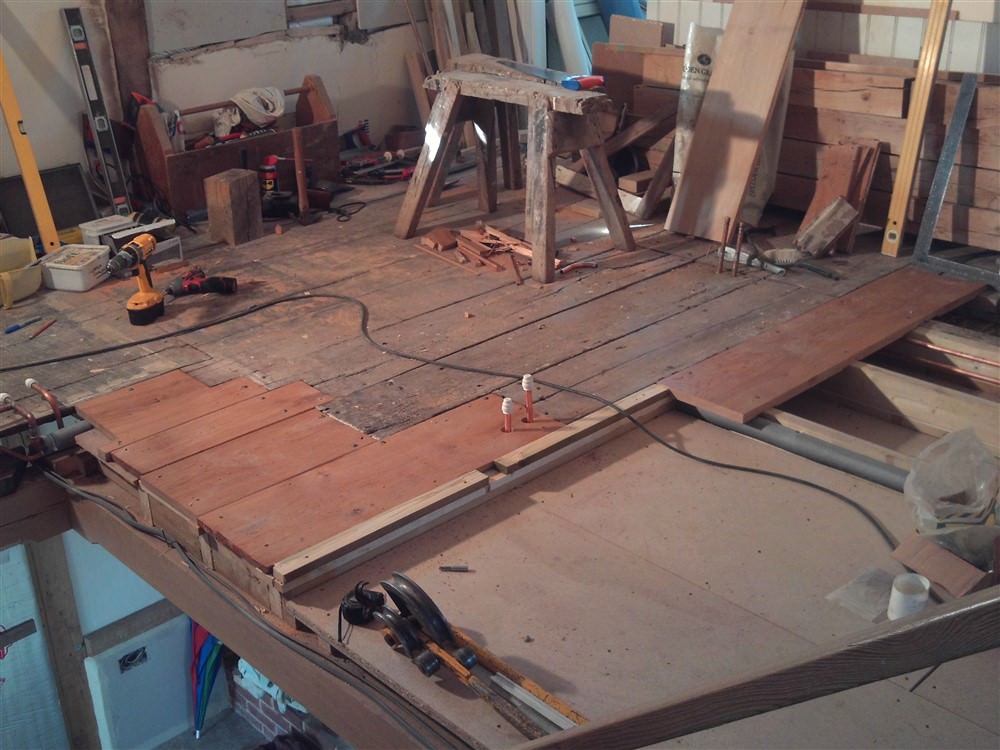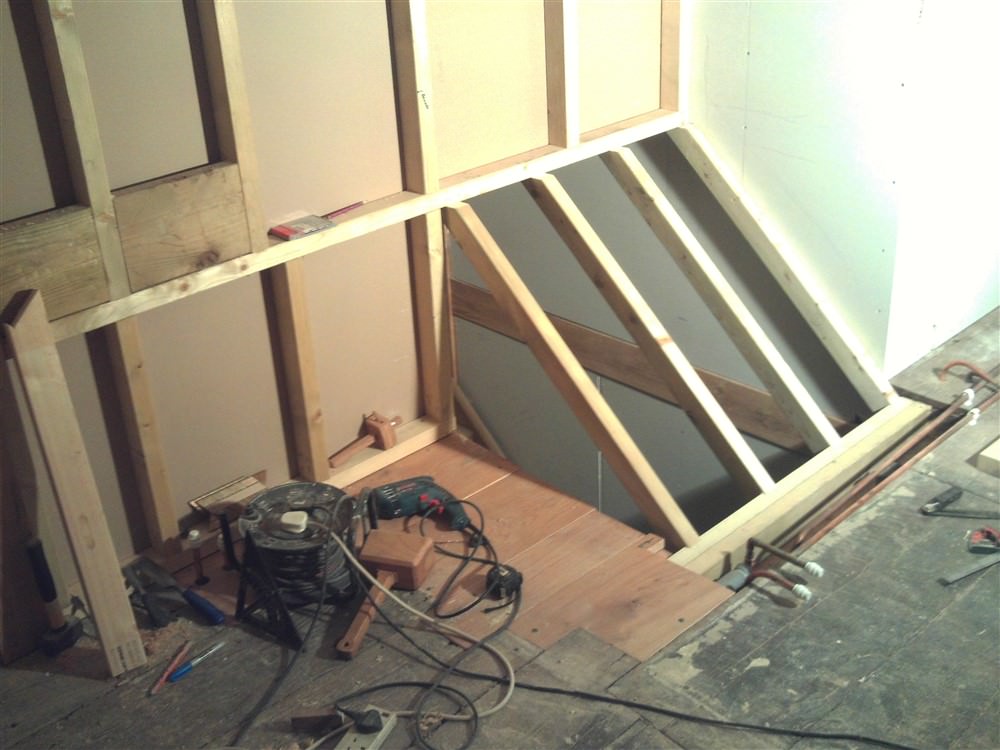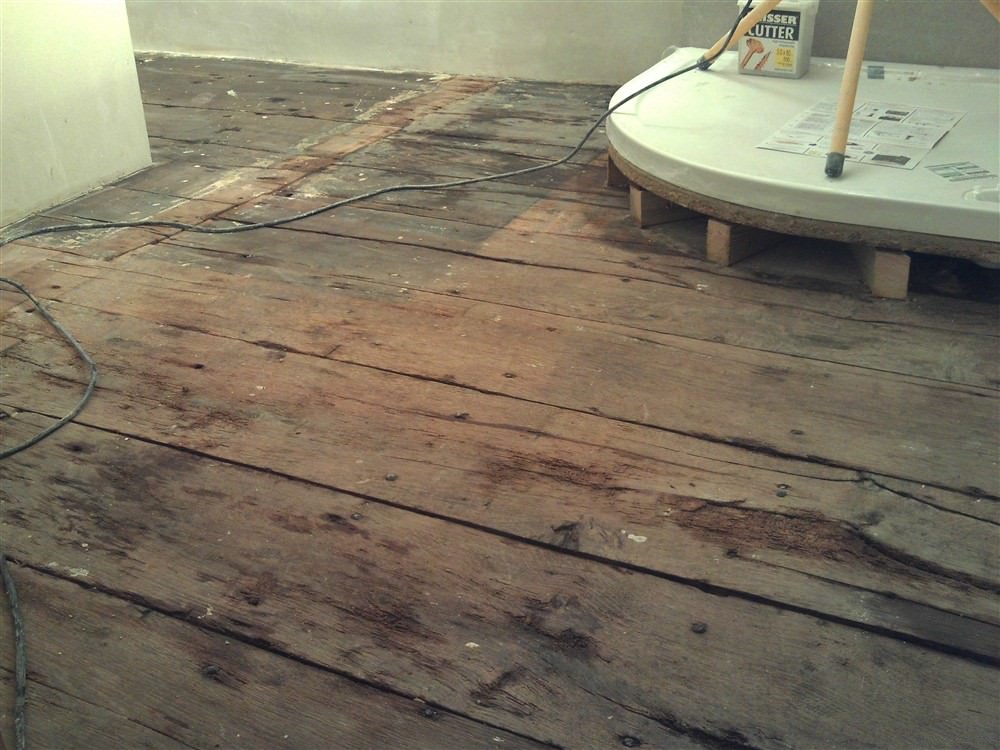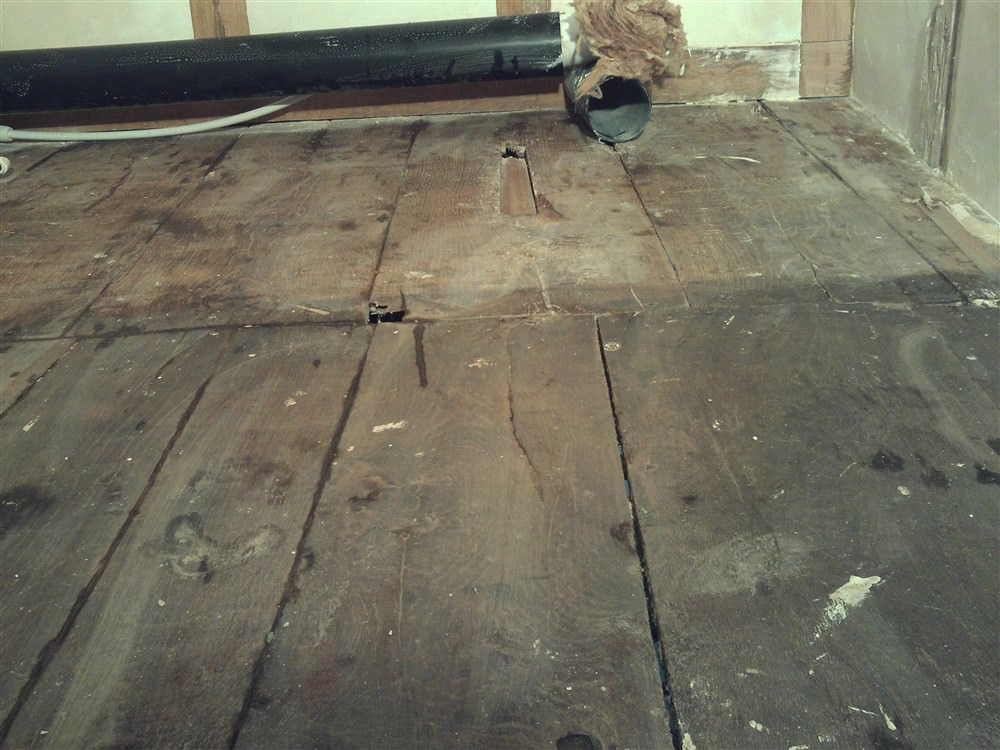MikeG.
Established Member
I am after ideas on finishing a rough old bit of oak flooring which is going to be in a bathroom for the first time. I'll grab some better photos later, but here is an idea of the issue:


Most of the floor is raw unfinished and quite crude floorboards. You can see I have patched in some new oak boards. Some of the floor is black, where it abutted a patch that was covered with lino. I am not sure whether this is a varnish, a stain, or a tanin reaction. Frankly, I'm not much bothered what this ends up looking like, but I want a practical useable bathroom floor, and I think that means it will need sealing with something. What do you suggest?
I also have a variety of gaps and splits which need filling, and I was wondering about using putty. I know it dries a bit too hard, and something flexible would be better, but I can't think of anything else. Again, I'm open to suggestions (and indeed, suggestions as to where to buy putty these days!).


Most of the floor is raw unfinished and quite crude floorboards. You can see I have patched in some new oak boards. Some of the floor is black, where it abutted a patch that was covered with lino. I am not sure whether this is a varnish, a stain, or a tanin reaction. Frankly, I'm not much bothered what this ends up looking like, but I want a practical useable bathroom floor, and I think that means it will need sealing with something. What do you suggest?
I also have a variety of gaps and splits which need filling, and I was wondering about using putty. I know it dries a bit too hard, and something flexible would be better, but I can't think of anything else. Again, I'm open to suggestions (and indeed, suggestions as to where to buy putty these days!).






